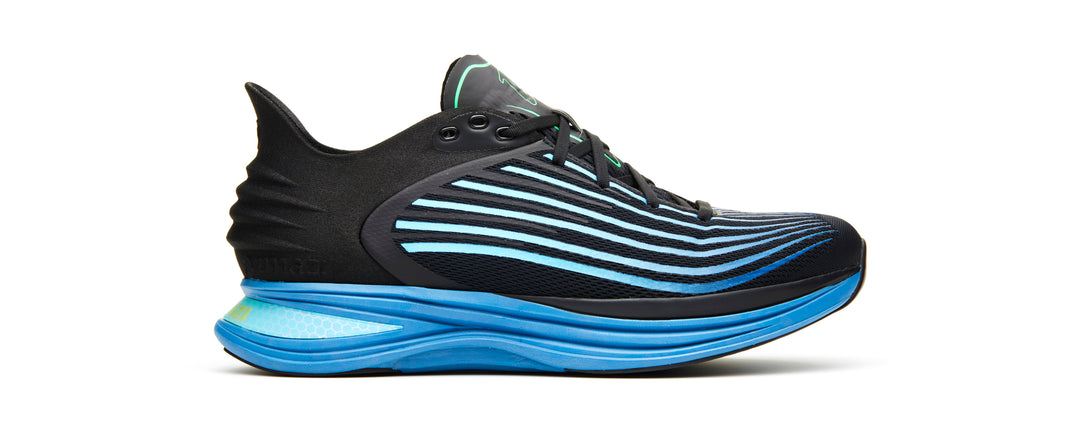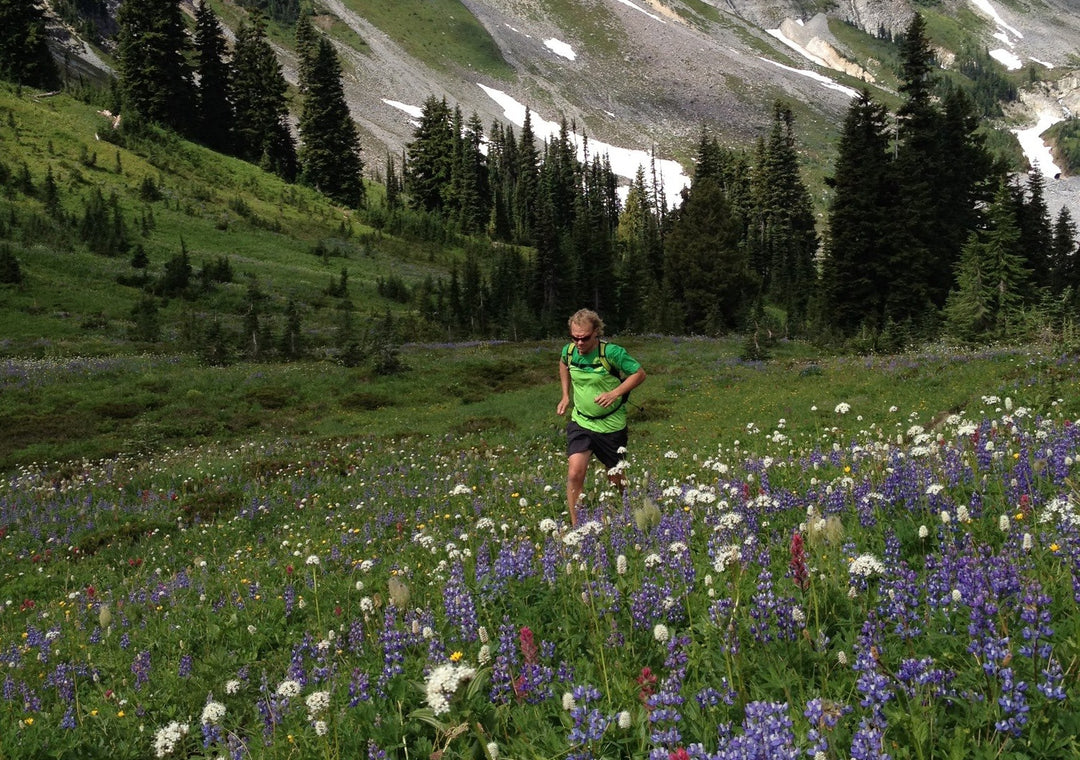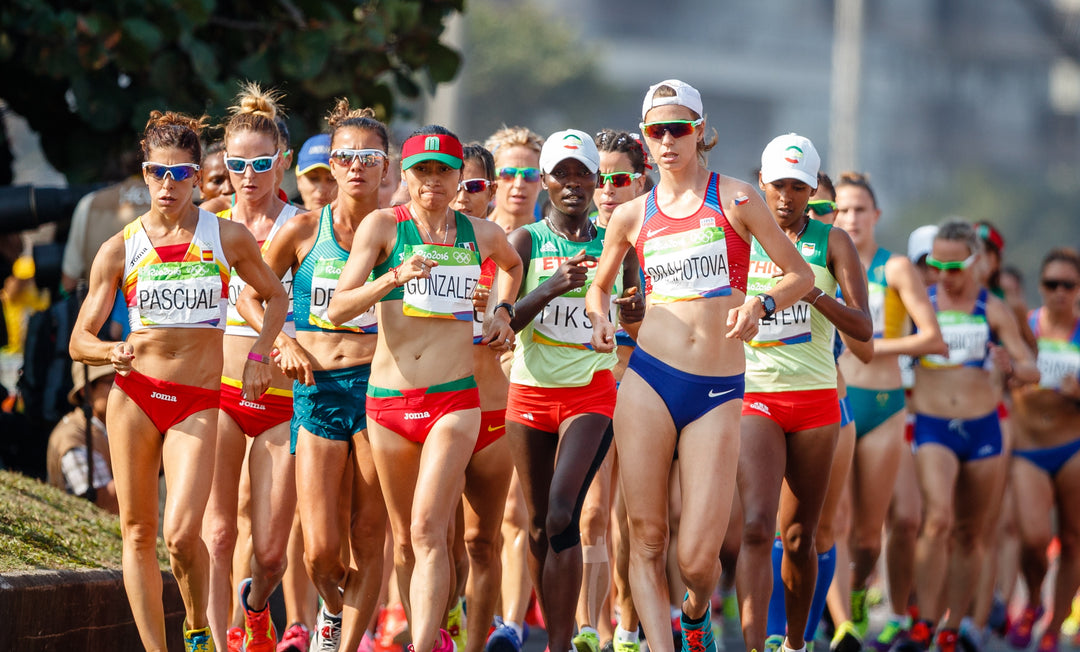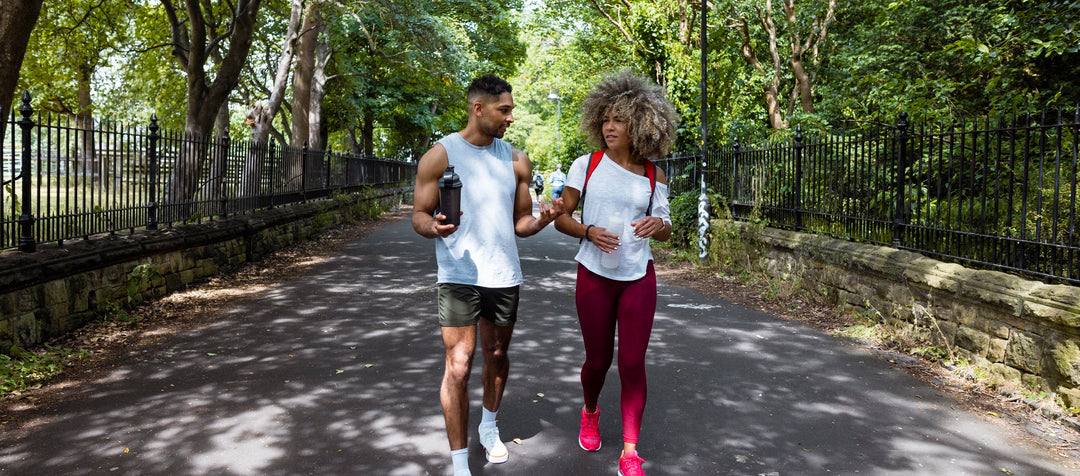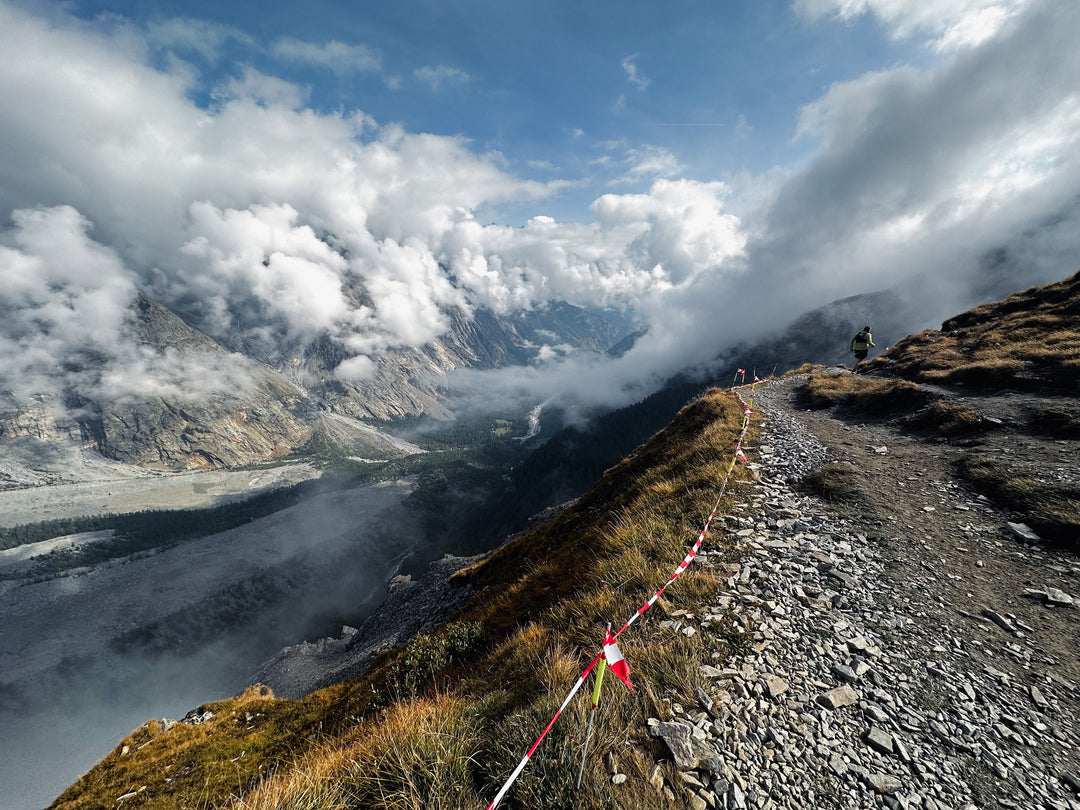Many of us have heard the term “trampoline” used by people to describe the feeling of certain running shoes. But what does that actually mean in terms of the energy you expend while running?
I've found that describing how real trampolines work provides important insights into how the human body works. Then, by distinguishing between a trampoline and a human we can understand what happens in a so-called super-shoe.
If you’ve ever jumped on a trampoline, this will sound intuitive. A trampoline works as a giant spring (giant compared to a human trampolinist) where the steel spring coils arrayed on the perimeter have a certain stiffness and the canvas stretching between them can bend without stretching. When a massive object, like a trampolinist, falls under the force of gravity onto the trampoline, the kinetic energy of the body stretches the spring coils from their state of equilibrium. The trampolinist experiences the sensation of sinking into the trampoline and then being propelled back up into the air. Let’s describe this in slightly more detail.
The motion of a trampolinist in contact with the trampoline can be described, to a very good approximation, using Hooke’s Law
𝐹 = 𝑘𝑥
where F is the force, x is the distance the trampolinist’s center of mass sinks below equilibrium (the trampoline surface before landing on it), and k is a number called the spring constant. The spring constant describes the overall stiffness of the trampoline. Note that there are two separate pieces to bouncing on a trampoline: the piece when you are touching the canvas and the piece when you are in the air. Hooke’s Law only applies to the piece in contact with the canvas. This is important, because the length of time a trampolinist is in the air is different from the time touching the canvas. We know this intuitively either from watching a gymnast or bouncing on a trampoline ourselves. But the distinction is important.
A trampoline, like other springs that obey Hooke’s Law, has a natural frequency of oscillation that depends on the mass of the trampolinist and the trampoline’s spring constant k. We can look at the math equation for the natural frequency, but the important thing is to get an intuitive feel for what a natural frequency is.
Here is the equation that describes the natural frequency

where the Greek symbol w (omega) is called the angular frequency and m is the mass. Think of angular frequency as the rate of oscillation or how quickly it goes down and up. In words, this expression says that when the spring stiffness is higher (k is bigger), the frequency is faster (meaning the time period is shorter). And when the mass is greater, the frequency is slower. This should make intuitive sense too, because a heavier mass will stretch the trampoline farther, so it will take longer for it to stretch and then bounce back. Conversely, a stiffer spring won’t stretch as much, so it will take less time to stretch and recoil.
The most significant takeaway from the above discussion of Hooke’s Law is that the natural frequency depends only on the mass and spring constant. It doesn’t matter how high the trampolinist jumps or how much force they land with: The time it takes to stretch and rebound will be the same regardless of jumping height. This turns out to be a very useful thing for the trampolinist, because it allows them to time the flexing of their legs in sync with the trampoline. After jumping for a few repetitions on the trampoline, we figure out how long it takes (i.e. we mentally keep track of the natural frequency) so we can bend our knees when sinking down and extend them when the trampoline is pushing us up. This is called being in resonance with the trampoline and it is what allows us to jump higher and higher.
The most important thing to remember about resonance is that it is our bodies that must match the natural frequency of the trampoline to get the energy return that propels us higher. We have to consciously do this and it takes some practice. The trampoline does not adjust its frequency to match ours. If we are not very good at timing our jumps with the trampoline, we push off at the wrong time and we don’t get effect of energy return. The same thing applies to diving boards and gymnastic springboards. This isn’t about how hard we push off, it’s about the timing of the pushoff.
What does this have to do with running and running shoes? First, think about barefoot running. When we run, the time we are on the ground pushing off is determined by our bodies. It is a definitive function of our cadence and stride length (the math gets a little bit harry). The important point, however, is that the contact time is set by our bodies.
Now imagine that we put springs under our feet and go running. The contact time is still set by our bodies. If we choose, we can run barefoot at a certain cadence and stride length, then strap springs to our feet and run with the same cadence and stride length.
What does this have to do with the natural frequency of the springs attached to our feet? Nothing. The two are unrelated, because the spring’s natural frequency is determined by the spring constant and body mass, and the ground contact time is determined by cadence and stride length. In the case of running shoes, the “springs” are very short (relative to a trampoline!) and the natural frequency is likewise very short (much shorter than the running ground contact time). Since the ground contact time and the spring frequency are not the same, the spring cannot return energy to the runner.
This can be proven mathematically, but the point of this post is to convey it conceptually.
When a runner says that their shoes feel like trampolines, they may be describing the sinking feeling, but aren’t describing the rebound (at least not in a physical reality sense). Since their shoes are not returning any energy, they can’t be helping the runner move with less energy.
More About Vimazi
Here’s what Vimazi does
We make pace-tuned running shoes that provide better cushioning and more efficiency than previous generations of running shoes.
The physics of pace-tuned shoes
Back in 2017, while Vimazi CEO Scott Tucker was running to his 6am interval workout, he had an idea. A shoe made for a specific pace, he thought, might offer better cushioning and more propulsive efficiency than a generic shoe that wasn’t “tuned” for a particular pace.
It took three years to fully understand the physics of human running, and the forces that are generated. When we finally understood the physics, we built an equation that defines running forces. We’re now able to calculate the exact impact force and propulsion force, in Newtons, for any pace, including variations for height, weight, and cadence. (A Newton is a metric unit of force.) Data from the Forces in Running study we conducted aligned with the force calculations we got from the physics. In other words, we know it works.
Knowing the precise impact and propulsion forces at each pace, allowed us to create shoe models for different pace zones. So our pace-tuned technology is based on pure physics. No hand waving, no conjecture, no correlative studies, no self-reported data sets, no marketing fluff. We started with the physics of human running, and it led us to pace-tuned shoes.
The problem with previous gen running shoes
Most running shoes have the same foam density from heel to toe, and they’re sold to runners of every pace. The trouble is that midsole foam can’t respond correctly to the forces at all paces, and it can’t even respond appropriately to the differences between impact and propulsion forces. To make sure you get all the cushioning you want as well as all the efficiency you deserve, you need a shoe that’s made for a specific pace zone and tuned differently in the heel than the forefoot.
The Vimazi solution
Our solution to this running shoe problem was to create something that's never been done before—pace-tuned running shoes. In 2023, after years of testing, we launched seven road shoe models that span paces from 4:30 minutes per mile to 15 minutes per mile (2:50-9:30 minutes per kilometer). By making a shoe for a specific pace zone, we’ve been able to deliver better impact cushioning and propulsion efficiency for every runner.
25 years experience
We’ve taken everything we learned making running shoes for 25 years—and running marathons for even longer—and elevated it to a whole new level with pace tuning. It offers a better and more personal running experience. We were instrumental in creating shoes for Montrail, Scott Sports, and Pearl Izumi. We learned even more while owning a specialty running store and organizing running events.
A marathoner’s fit
Running shoes can have the best tech, but if they don’t fit well, nobody will wear them. We wouldn’t either! Not only have we spent our careers perfecting innovative fit technologies at other companies, notably at Montrail, we’re also life-long marathon runners ourselves. So we understand fit and know how critical it is, from heel to toe. Each of our models has been painstakingly designed and built with the perfect fit in mind. They’ve also been extensively road tested since 2019, including at the Boston, London, Portland, Missoula, San Antonio, and Two Oceans Marathons. We think you’ll love them.





